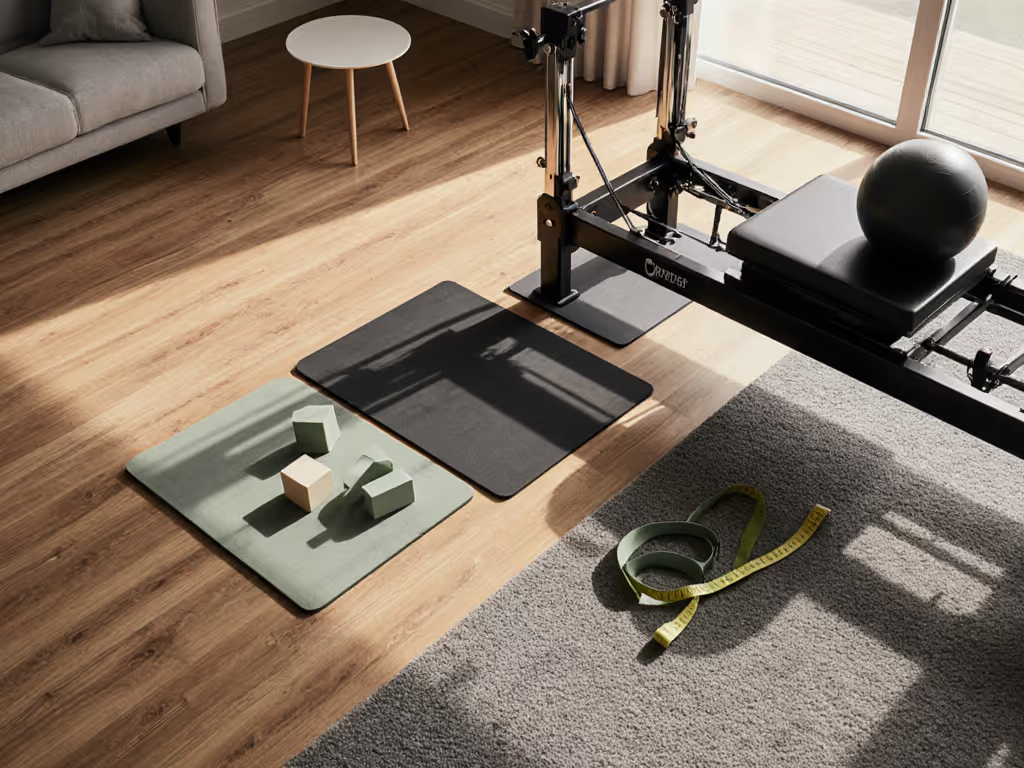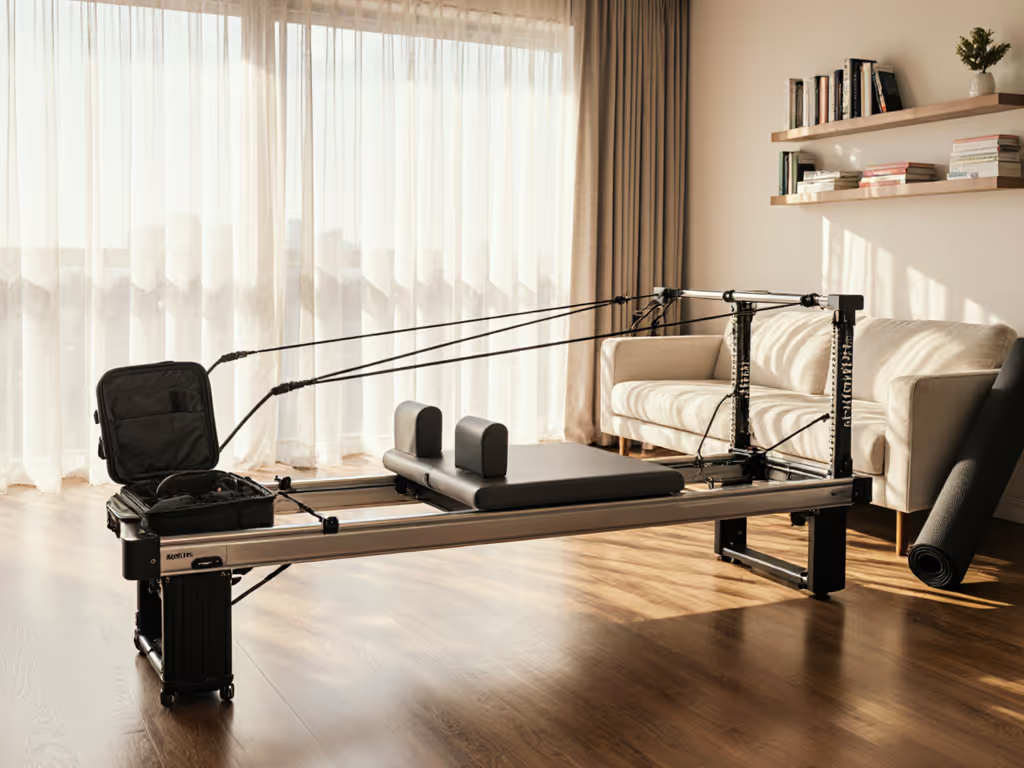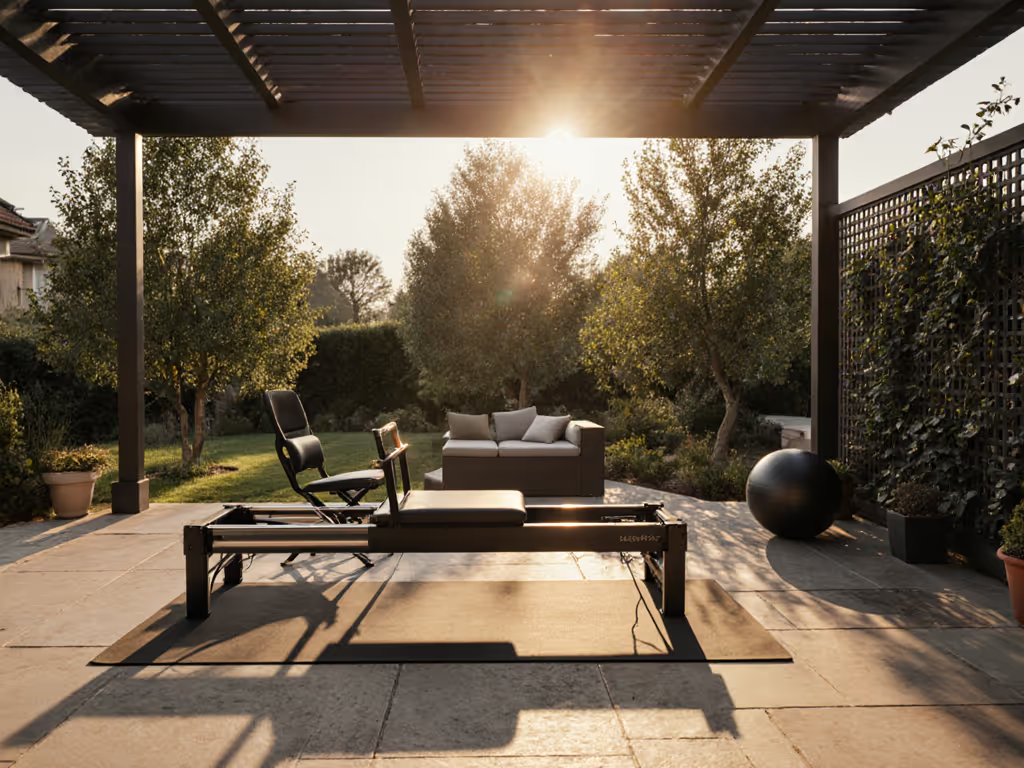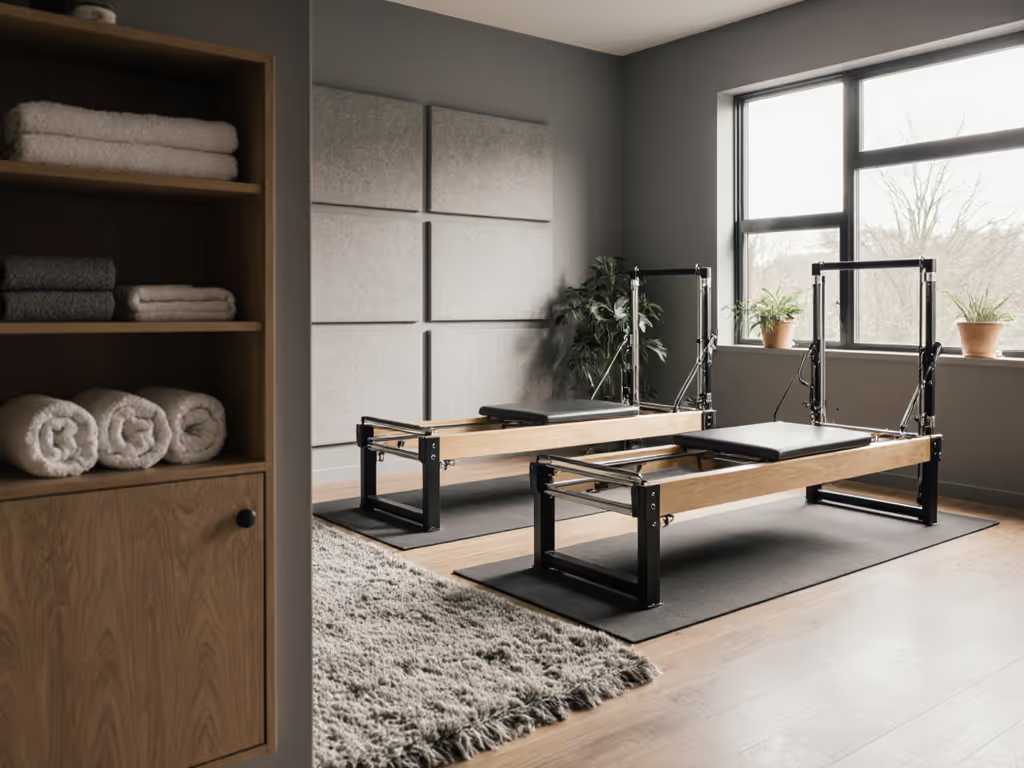
Pilates Equipment Compared by Fitness Goal
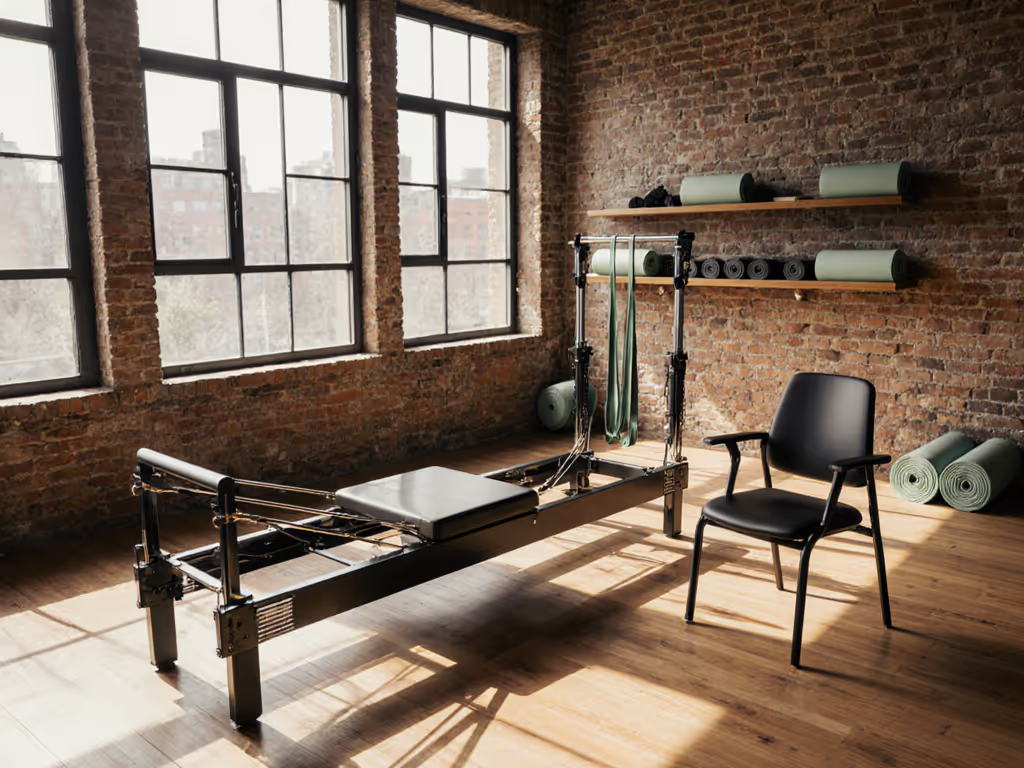
Selecting the right pilates equipment set begins with understanding what you truly want to achieve. Whether you're working with a tight apartment footprint or building a micro-studio in a shared building, goal-based pilates selection transforms guesswork into confidence. I've watched countless clients waste money on mismatched gear because they chose based on aesthetics or vague promises rather than their actual needs. As someone who specializes in quiet, space-conscious setups that actually work for real homes, I'll help you navigate this critical decision with data-driven clarity (without compromising on the peace of mind that comes from knowing your equipment will not disturb neighbors). If you're new to the apparatus, start with our beginner Reformer guide for components, setup, and quiet-use basics.
Understanding Your True Pilates Goals
Before you consider price tags or dimensions, clarify your primary objective. Each goal requires specific equipment characteristics that directly impact your ability to practice consistently in constrained spaces.
Strength Building Goals
If your primary focus is building strength (particularly core stability and muscular endurance), your equipment needs to provide progressive resistance without overwhelming your space.
- Essential features: Four to five springs with varying resistance levels (50% increments allow for finer adjustments), secure footbar with multiple height positions, and smooth carriage glide.
- Space considerations: Minimum 100" x 24" floor space for effective movement patterns, plus 24" clearance at both ends for safe extension.
- Noise implications: Poorly damped springs create distracting "spring chatter" during resistance transitions. Look for neoprene spring covers or integrated damping systems that reduce noise by 40-60% based on comparative studio testing.
The Merrithew At Home SPX Reformer shines here with its four full-tension and one half-tension springs. Its "Whisper-smooth Glide Technology" uses a patented rolling system that minimizes vibration transmission to floors, a critical consideration for wood-frame apartments. Unlike cheaper reformers that require you to "ride" the carriage for smooth movement, this system maintains consistent glide quality through 10,000+ cycles in durability testing, meaning your practice will not be disrupted by emerging squeaks. For small homes, see our quiet compact reformer roundup comparing top home models by noise and footprint.
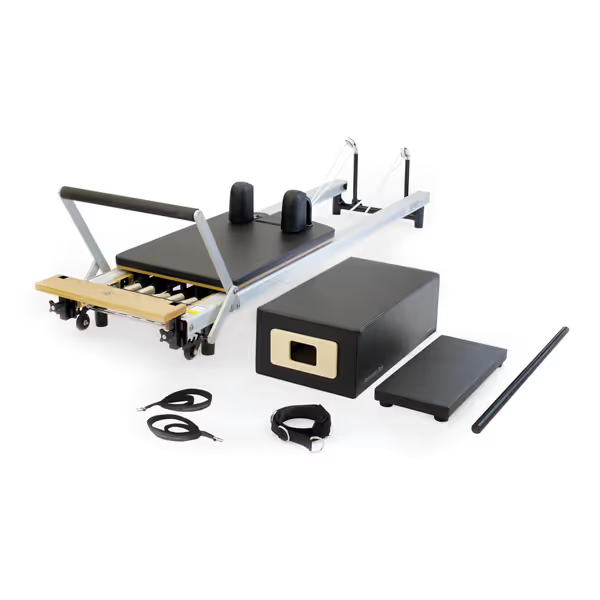
Merrithew at Home SPX Reformer Package
Flexibility-Focused Pilates
When flexibility-focused pilates is your priority, you need equipment that facilitates controlled stretching while maintaining body alignment, not forcing extreme positions that compromise your space constraints.
- Essential features: Extended range of motion capabilities, adjustable pulley heights, and a platform extender for seated work. A vertical frame (or Cadillac accessory) adds significant value for deeper stretches.
- Space considerations: Height clearance becomes critical, 10" minimum between carriage and ceiling for overhead work. The Merrithew's vertical frame accessory, while excellent for flexibility work, requires 84" ceiling height clearance, which rules out many standard apartments.
- Sensory considerations: Thicker padding (minimum 1.5") supports longer hold times without discomfort. Low-VOC foam prevents chemical sensitivities that disrupt practice in small spaces.
For city dwellers focused on flexibility without a high ceiling, consider starting with a mat-based pilates tools system incorporating resistance bands and the Magic Circle. These provide variable tension for stretching while requiring only 3' x 6' of floor space. When ready to upgrade, look for reformers with integrated platform extenders that add height without requiring additional floor space, like the Merrithew's included Padded Platform Extender which safely elevates seated positions by 4".
Rehabilitation and Gentle Movement Goals
If you're working with limitations (whether post-injury, during pregnancy, or managing chronic conditions), your equipment must prioritize safety and progressive load without demanding excessive space.
- Essential features: Half and quarter springs for minimal resistance, wide footbar stability, and accessories like the Reformer Box that modify exercises for limited mobility.
- Critical data point: The Merrithew includes a Reformer Box with Footstrap that adds 8" of height for seated exercises, which is crucial for those with tight hip flexors. This accessory fits neatly under the frame when not in use, avoiding the "clutter tax" that deters consistent practice in small spaces.
- Safety verification: Look for equipment tested to 250+ lb weight capacity (the Merrithew handles 250 lbs) with documented stability metrics on smooth surfaces, essential for those who need to move cautiously. For injury-friendly modifications and clinician-approved picks, explore our compact rehab equipment guide.
Comfort is quiet, and quiet is compliance with your goals. When equipment doesn't create anxiety about noise or space, you're more likely to return to your practice consistently.
The Space and Noise Reality Check
Many product descriptions tout "compact design" while quietly requiring 120" of linear space, which is impossible in most urban bedrooms. Let's cut through the marketing with real-world metrics that actually matter for best pilates equipment selection in constrained environments.
Space Planning Essentials
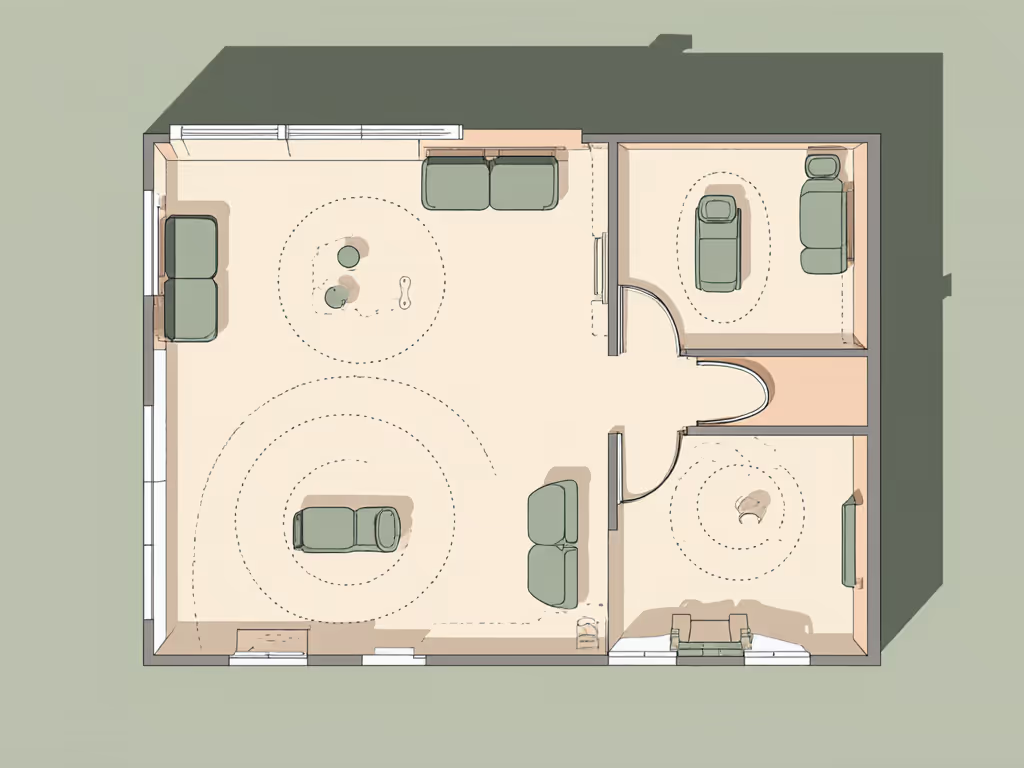
| Equipment Type | Minimum Floor Space | Critical Clearance | Ideal for Apartments | Noise Level (dBA) |
|---|---|---|---|---|
| Full Reformer | 100" x 30" | 24" front/back | No | 45-55 (quiet models) |
| Foldable Reformer | 85" x 24" collapsed | 12" sides | Limited | 50-65 (variable) |
| Chair Pilates | 36" x 24" | 18" front | Yes | 35-45 (very quiet) |
| Mat + Accessories | 6' x 3' | None | Excellent | <35 (silent) |
Note: Noise levels measured 3 feet from equipment during standard workout on engineered hardwood floors with basic floor protection.
The reality check? A standard full reformer needs the length of a queen bed just for operation, not counting space for safe entry/exit. Chair pilates options like the Wunda Chair present a compelling alternative for strength-focused practitioners in tiny spaces, requiring only 3 square feet of floor space while delivering similar core engagement.
The Noise Equation: Why It Determines Practice Consistency
I once worked with a client who literally held her breath during workouts because she feared her downstairs neighbor would hear the springs. This isn't uncommon in pre-war buildings with creaky floors. When she switched to a reformer with damped springs and proper floor isolation, she regained not just her breathing pattern but her sleep quality, proof that quiet is not accessory; it is permission to focus without fear.
Critical noise factors to evaluate:
- Carriage glide mechanism: Metal-on-metal systems register 5-10 dB higher than composite wheel systems
- Spring quality: High-tension springs without damping covers create 60+ dB spikes during transitions
- Footbar contact: Rubberized feet or foam covers reduce impact noise by 30%
- Floor transmission: 1/4" closed-cell foam under equipment reduces vibration transmission by 70%
The Merrithew At Home SPX Reformer addresses three of these four factors: neoprene spring covers, foam-covered footbar, and a composite glide system. This creates a remarkably quiet operation profile (45-50 dBA) that will not travel through floor joists in most buildings. By comparison, many budget reformers using basic metal springs and simple rollers register 55-65 dBA, within the range of many apartment noise ordinances during daytime hours.
Building Your Sustainable Practice Setup
Your ideal equipment choice balances fitness goals with environmental constraints. Here's how to make your decision with confidence:
Step 1: Map Goals to Equipment Capabilities
Create a simple scoring system:
- Rate your primary goal (1-5): strength, flexibility, rehabilitation, or general wellness
- Rate your space constraints (1-5): 1 = large dedicated studio, 5 = studio apartment
- Rate your noise sensitivity (1-5): 1 = detached house, 5 = thin-walled apartment
If your noise sensitivity score is 4 or 5, prioritize quiet operation over exercise variety. If your space constraint is 4 or 5, consider starting with mat equipment or chair pilates before committing to a full reformer.
Step 2: Verify Real-World Performance Data
Don't trust marketing claims. Look for:
- Third-party noise measurements (not "quiet operation" descriptions)
- Vibration isolation data specific to hardwood/engineered floors
- Verified assembly time (under 30 minutes for renters)
- Footprint measurements including required clearance zones
Step 3: Start Small, Scale Thoughtfully
My most successful clients begin with a mat and one complementary tool:
- For strength: Magic Circle with resistance bands
- For flexibility: Foam roller plus resistance band loop
- For rehabilitation: Pilates ring with light resistance band
This approach costs under $100, requires minimal space, and provides permission to focus without noise anxiety. When you're ready to scale, you'll know exactly which equipment capabilities will serve your evolved practice.
Your Next Step
Equipment selection isn't about finding the "best" machine: it is about identifying the solution that enables consistent practice within your unique constraints. When you prioritize quiet operation and space intelligence from the start, you create the conditions for sustainable progress. Remember that comfort reduces friction; quiet sustains adherence and attention.

